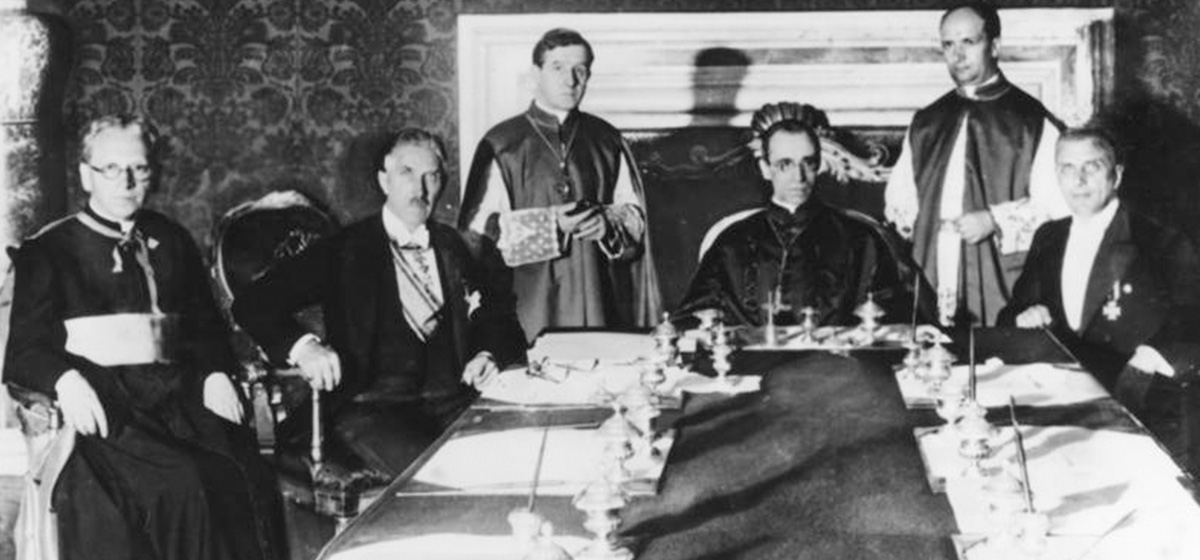Europe Fails to Build the New Man

Since human beings settled into communities—that is, since most of us stopped being hunter-gatherers—a primary goal of mankind has been to improve how we are governed. We wanted governments that were more representative, fair, and efficient, governments that could improve our economic circumstances and defend themselves (and us) from outside influence or destruction. We wanted governments that would constrain the worst of our instincts while giving free reign to what is good and creative in us.
In Europe, this quest began in Britain with the Magna Carta and has proceeded apace in that country to this day—Brexit maybe being a Great Leap Forward or maybe a Great Leap Backward. The American and French Revolutions occurred in the 18th century and attempts to improve on the original models of those governments have also continued down to present times (with, admittedly, the occasional backsliding).
But something went wrong in Russia. From Rurik I in the early 9th century, down through the Grand Princes (of Kiev, Novgorod, Vladimir and Moscow, respectively), and on into the long reigns of the Tsars that began with Ivan IV in 1584 and concluded with Nicholas II in 1917, Russians were governed forever by autocrats and tyrants. In the early 20th century, the Russian government looked little different than it had looked in the time of Ivan the Terrible. Little wonder that the Russians gave up on trying to improve government and decided, instead, to try to improve the governed.
The enthusiasm for creating the New Man swept much of Europe between the wars, including, of course, in the USSR, where it reached its highest flowering. It was obvious from the beginning that if mankind were to be “perfected” there was a hell of a lot of work to be done. People had, over the course of thousands of years, become annoyingly attached to bourgeois ideas like religion, family, community, and property, and of course all this had to be jettisoned.
Religion—“the opiate of the masses”—was the first to go, since way too many people believed their church to be superior to their state. Family quickly followed, as elaborate wedding ceremonies gave way to meaningless civil procedures, spouses were encouraged to inform on one another, children were encouraged to inform on their parents, and the state took over responsibility for childrearing. Communities were destroyed wherever their presence interfered with the needs of the state. Private property was abolished, as the state became the owner of all means of production. Those who stood in the way—eight million kulaks, for example, who owned tiny bits of farmland—were ruthlessly liquidated: “Merciless war against the Kulaks! Death to them!” as Lenin put it.
In the various socialist economies that began to spring up across Europe beginning in the mid-19th century, the enthusiasm for creating the New Man never reached the extreme it achieved in the USSR. But in every European state except Britain and France there were kinder, gentler versions of the New Man, all based on the notion that it was easier and better to improve the governed than it was to improve the government.
In Spain, for example, religion was obliterated in the constitution of 1931, a document that political scientist Alfred Stepan has described as one of the most hostile constitutions toward religion in the entire 20th century. (Franco’s coup would reinstall the Church in Spanish society a few years later.) In Italy the early socialist governments were so hostile to religion that in 1870 the Italian military invaded Rome and seized the Papal State. It was only under Mussolini that the Lateran Accord was signed in 1929, recognizing the Vatican as an independent entity headed by the Pope.
Germany’s Weimar Constitution was, as William Shirer put it, “the most liberal and democratic document of its kind the twentieth century had ever seen.” However, it lasted less than 15 years. Articles 135 to 141 of the Constitution guaranteed religious freedom, but Weimar elite society sneered at religious observance. The so-called Weimar Renaissance, a remarkable flowering of art, culture, architecture and music, was profoundly leftwing, anti-religious, anti-capitalist, and nihilist. But religion was restored in 1933 when the Nazi government signed the Reichskonkordat with the Vatican, guaranteeing the rights of the Church in Germany. (Hitler would later largely ignore the treaty.)
These various attempts to eradicate religion in Europe all came to grief, suggesting that the attempt to create a New Man might be doomed to failure. A similar disaster awaited state control of the means of production, as nationalization of major industries, which spread rapidly across Europe both before World War I and between the wars, proved uncompetitive and had to be abandoned.
Thus it was that little attention was paid to developing effective, stable, fair governments, since the real objective had changed to improving the citizens of those governments. Unfortunately, when the citizen-improvement project failed, nothing was left but chaos. A bizarre example of this failure occurred in Spain, where the socialist constitution allowed six regions of the country to engage in self-determination. The idea was that the socialist state in Spain—home of the New Man—was so desirable no one would want to leave it. Unfortunately, all six regions proved to be enthusiastic about leaving, and Spain was in the process of unraveling when Franco’s coup ended the devolution.
Everyone everywhere (university campuses excepted) understands the tyrannical nature of the USSR and the failure of its project to create the New Man. Unfortunately, the failures of the democratic republics of Germany, Italy, Spain and Portugal seem to have been forgotten or ignored. Yet it is those failures that hold the most relevant lessons for us today, assuming that we wish to understand the astonishing victories of populism in the U.S., the UK, and elsewhere. We’ll take a look at those lessons next week.
Next up: On Populism, Part IV





